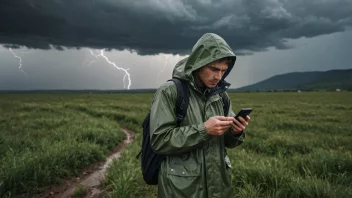Urban exploration, often abbreviated as urbex, is the exploration of man-made structures, often abandoned buildings or hidden areas within urban environments. This activity not only provides thrill-seekers with unique experiences but also influences urban policy in various ways. Below are some frequently asked questions about urban exploration and its impact on city planning and regulations.
What is urban exploration?
Urban exploration is the act of exploring abandoned or off-limits urban structures, such as factories, schools, tunnels, and rooftops. Enthusiasts, known as urban explorers, often document their findings through photography and storytelling.
How does urban exploration influence urban policy?
Urban exploration can draw attention to neglected spaces, prompting city officials to address issues such as safety, preservation of historical sites, and community engagement. Explorers often advocate for the revitalization of abandoned areas, influencing urban renewal strategies.
Is urban exploration legal?
The legality of urban exploration varies by location and context. In many cases, entering private property without permission is considered trespassing. However, some urban explorers operate in legally accessible areas, such as public buildings or rooftops.
What safety measures should urban explorers take?
- Research: Know the location and potential hazards.
- Go in groups: It’s safer to explore with others.
- Wear appropriate gear: Sturdy shoes, gloves, and flashlights are essential.
- Respect the environment: Leave no trace and do not vandalize.
What motivates people to engage in urban exploration?
Many urban explorers are motivated by a desire for adventure, curiosity about history, and a fascination with the stories behind abandoned places. It provides a deeper understanding of urban landscapes and their evolution over time.
Can urban exploration contribute to local communities?
Yes, urban exploration can highlight the potential for community engagement and local tourism. By showcasing forgotten spaces, explorers can inspire community projects aimed at restoring and repurposing these areas, fostering a sense of pride among residents.
What are some famous urban exploration sites worldwide?
- Detroit, USA: Known for its abandoned buildings and rich history.
- Pripyat, Ukraine: The site of the Chernobyl disaster, now a haunting reminder of the past.
- Hashima Island, Japan: An abandoned island once home to a thriving coal mining community.
- The Catacombs, Paris: A network of underground ossuaries holding the remains of millions.
How can urban explorers advocate for urban policy changes?
Urban explorers can advocate for policy changes by documenting their findings, sharing stories through social media, and collaborating with local organizations focused on urban renewal. Engaging in public discussions and attending city council meetings can also amplify their voices.
What ethical considerations should urban explorers keep in mind?
Urban explorers should prioritize ethics by respecting private property, avoiding vandalism, and ensuring their activities do not endanger themselves or others. It is also important to consider the historical and cultural significance of the sites they visit.
In conclusion, urban exploration is not just about adventure; it holds significant implications for urban policy and community development. By understanding its influence and participating ethically, urban explorers can positively impact their cities while enjoying unique experiences.






